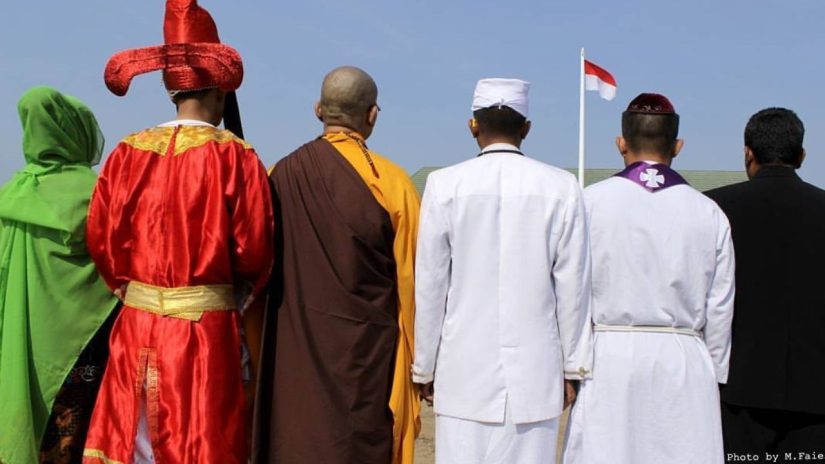
Athanasia Safitri
The Wednesday Forum discussion series came back for its first session in 2024 on February 21 with Prof. Dr. Martin Rötting giving a talk on his research about spirituality in plural societies. Rötting is an Associate Professor and head of the Religious Studies program at the Centre for Intercultural Theology and Study of Religions at Paris-Lodron University of Salzburg, Austria. His empirical study seeks to answer the question of how spiritual identity may develop in the personal journey and interreligious world. The research explores the changes of individuals and religious organisations through field research in Munich, Seoul, Vilnius, and New York.
Religion and spirituality may seem to be very clear for some people, yet can be complicated to the rest.According to Rötting, religions have made efforts to advertise themselves to convince people that they are everlasting. However, since humans have failures, religion and spirituality develop areas of crisis and dynamic transformation in plural societies. The process toward interfaith relations results in the creation of a puzzle of hope where every individual may wish for different elements and embrace the plurality.
Navigating our spiritual map
Through studies taking place in many parts of the world, Rötting presented that popular religion developed rapidly and it shifted the perspective of religion and spirituality. People can attend religious events without any spiritual intention nor religious purpose. Society may even view religions merely as actors in a theatre whose importance faded as the spotlight dimmed. People may call themselves spiritual but surely do not want to be associated with religions. Furthermore, new forms of religious groups, ideas, and practices of beliefs and spiritualities, including abuse and misconduct, also foster processes of transformation of established religious organisations.
Rötting underlined one of his findings that spiritual identity needs to be viewed as life-path navigation. When a spiritual map is divided into layers based on each spiritual growth or phase, he stated that there are three layers of colour (see video recording on the CRCS UGM YouTube, timestamped here). While blue represents our original map which marks the early stage of our spiritual identity, the next one is yellow that directs or changes our navigation as a result of either progress or decline. The updated and the last one is coded as green where our origin and growth blend together, or are completely changed as some may end up with a spiritual conversion. This navigation plays a pivotal role in determining the range of our spiritual identity.
Our future religion
Another point presented by Rötting was spiritual anamorphose where the perspective of life is seen in one picture, all the same for everyone. It makes people look at things related with spirituality exactly the way they see it in a special manner. Moreover, viewing from different angles prevents them from having a clear understanding about particular aspects in religion or beliefs. Spiritual journey from the concept of anamorphose could create a religion which keeps religious people in a certain track yet a different phase of religious maturity can hinder the community from growing collectively. It may work for spirituality or organised religion which includes stable formation on religious teachings, and accompaniment among the practitioners.
Future religion was predicted by Rötting to be a network of spirituality bubbles. As bubbles symbolise the brief nature of life and the necessity of living in the present moment, he implied that people should learn to appreciate each moment while conducting their religious tradition. It prompts the practice of inter-religiosity since people must live side by side inevitably with each of their very own spiritual journeys. Furthermore, Rötting highlighted that nowadays people become comfortable in searching for space among other religions without having the urgency of converting. The concept of ‘dual-religion’ enables them to be open to interfaith dialogue and prayer for peace in different houses of prayer.
The presentation concluded with the understanding that interfaith relations may be a process to unite people. One religion in a plural society can cause irritation but multiple religious identities may come as a challenge as well. Interfaith and inter-religiosity can only occur when each religious community willingly shares a particular value in their teachings and reciprocates the knowledge from other religious groups. In other words, each will see closely upon sharing and reflect in their own tradition when given similar value to that of other traditions. The appearing green map, complementing one another will be more intercultural, not only interfaith. At the end of the day, the big puzzle of hope will emanate and reshape the spiritual plurality.


